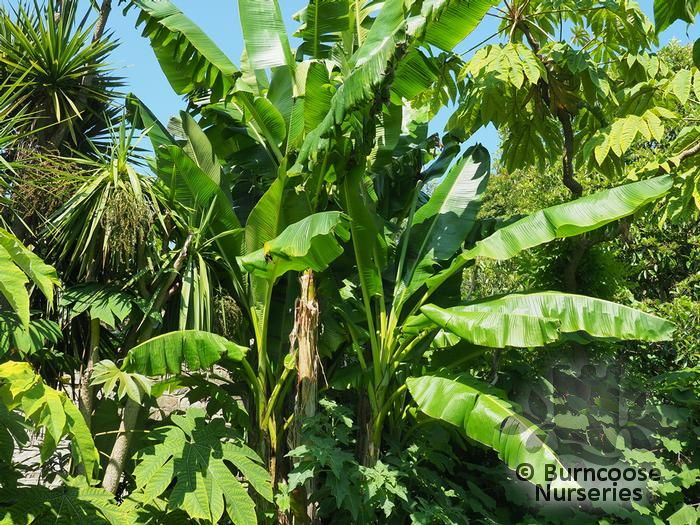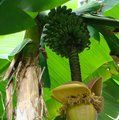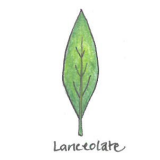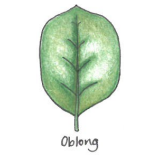Plants by mail order since 1984, over 4100 plants online today
Nursery & Gardens open: Mon - Sat 9.00 - 16.30 & Sun 10:00 - 16:00
Pop up café: Cafe Now Closed for Winter
- Shop Now
- Burncoose Specialities
- This Month
- Offers & Promotions
- RHS Chelsea Flower Show 2024
- 40 years at Burncoose
- Engage With Us
- Information, Help & Advice
- About Us & Our Services
- Terms & Conditions
- Log In / Register

MUSA basjoo
Commonly known as Japanese banana
The only banana species capable of growing outdoors in the UK and, in maturity, producing clusters of edible bananas. Huge arching lance-shaped leaves which may get damaged over a cold winter and need removing, but do not worry, new leaves will soon reappear
Further Reading....
-
EvergreenArching, oblong-lance-shaped, bright-green leaf blades to 3m (10ft) long.
-
 YellowPale yellow or cream.
YellowPale yellow or cream. -
 Height5m (16ft)
Height5m (16ft) -
 Spread4m (13ft)
Spread4m (13ft) -
Banana
-
PalmCan be multi-stemmed. Produces flowers 2-3cm (¾ to 1¼in) long with large, brown bracts in pendent, terminal spikes. More mature specimens may produce inedible fruits to 6cm (2½in) long.
-
 Tender - cool or frost free greenhouseTolerant of low temperatures, but not surviving being frozen. Except in frost-free inner-city areas or coastal extremities requires glasshouse conditions. Plant can withstand temperatures down to 1°C (34°F)
Tender - cool or frost free greenhouseTolerant of low temperatures, but not surviving being frozen. Except in frost-free inner-city areas or coastal extremities requires glasshouse conditions. Plant can withstand temperatures down to 1°C (34°F) -
 Full sunShelter from winds
Full sunShelter from winds
MUSA basjoo
- Details
- Description
- Tips and Advice
- Goes Well With
- Planting Combinations
- Other Suggestions
- See Also...
-
Additional FeaturesArchitectural interest
 Pests & DiseasesRed spider mite, mealy bugs and aphids can be a problem particularly if in greenhouse
Pests & DiseasesRed spider mite, mealy bugs and aphids can be a problem particularly if in greenhouse Place of originJapan
Place of originJapan -
Garden Location/ConditionsGreenhouse / conservatoryNot the sort of plants to be grown outside where there are likely to be frosts. These plants need to be grown in a conservatory or cool greenhouse or at least brought inside for the winterLoam based compost, plenty of light but shade from hot sun.Sub-tropical / mediterranean
-
HardinessHalf hardy (down to 0)
-
Leaf margin
 Entire
Entire(see photos above) -
Leaf shape
 Lanceolate
Lanceolate(see photos above)  Oblong
Oblong(see photos above) -
Seasonal InterestAutumnSpringSummer
-
Soil ConditionsFertile well drained soilHumus-rich
Jan
Feb
Mar
Apr
May
Jun
Jul
Aug
Sep
Oct
Nov
Dec
Banana Trees - Care Guide






















ACANTHUS mollis
Bear's breeches, Brank ursine
Available from £13.50

AMICIA zygomeris
Available from £24.00

ARUNDO donax var. versicolor
Giant reed
Available from £17.50

BAMBOO Fargesia nitida
Fountain bamboo
Available from £35.00

CANNA speciosa
Available from £14.50

CORDYLINE australis
New Zealand cabbage palm
Available from £14.00

CROCOSMIA 'Emberglow'
Montbretia
Available from £13.50

CYCAS revoluta

ENSETE ventricosum 'Maurelii'
Available from £20.00

FREYLINIA lanceolata
Honeybell bush
Available from £16.50

HYDRANGEA 'Enziandom'
Mophead
Available from £15.00
ITOA orientalis

MALLOTUS japonicus
Available from £25.00

MUSA
Banana, plantain
MUSA ensata maurelii

PHORMIUM 'Black Velvet'

PINUS patula
Jelecote pine, Mexican weeping pine

ROMNEYA coulteri
Matilija poppy
Available from £25.00

SALVIA guaranitica 'Black and Blue'
Available from £13.50

SEDUM spectabile 'Brilliant'
Ice plant
Available from £13.00

TETRAPANAX papyrifera 'Rex'
Rice-paper tree
Available from £30.00

WATSONIA pillansii
Available from £15.50
Useful extras...

Fertilisers & Feeds - Vitax
Q4 Pelleted Fertiliser
A useful fertiliser suitable for use on a wide variety of plants. Q4 provides all the nutrients and trace elements essential for vigorous growth, abundant flowering and ripening of fruit.
3 options from £6.00

Fertilisers & Feeds - Empathy
Afterplant - Grow Your Own
AFTER PLANT GROW YOUR OWN seaweed is ready to use liquid concentrate that was specially formulated be used on all edible plants.
Only £8.00

Fertilisers & Feeds - Empathy
Afterplant - Tomatoes
AFTER PLANT TOMATO FEED Liquid Concentrate with Bio stimulant is a high potash liquid concentrate containing seaweed extract, plant derived amino acids and other nutrients specifically formulated to benefit tomatoes and greenhouse plants.
Only £8.00

Fertilisers & Feeds - Empathy
Afterplant - House Plant Feed
Empathy After Plant House Plant Pump & Feed is a 100% organic (OF&G registered) ready to use biostimulant.
Only £6.99
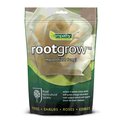
Fertilisers & Feeds - Empathy
Rootgrow mycorrhizal fungi
Recommended by the RHS. Contains Rootgrow™ mycorrhizal fungi. Suitable for all trees and shrubs (except rhododendrons, azaleas, heathers, cranberries and blueberries)
3 options from £3.00

Fertilisers & Feeds - Empathy
Rootgrow Ericoid mycorrhizal fungi
This specially adapted Rootgrow™ mycorrhizal fungi will boost the growth of acid-loving plants like rhododendrons, azaleas, heathers and blueberries.
It contains ericoid and arbuscular mycorrhizal fungi, which are found in poor acidic soils where ericaceous plants naturally grow.
Only £7.50


